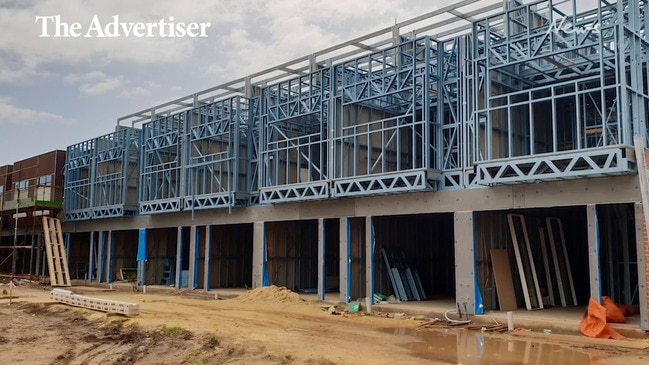UDIA SA branch tells planning reform that proposed housing blocks should be smaller
Smaller housing blocks should be allowed across Adelaide say developers but councils want more scrutiny of infill development. - WHAT’S YOUR VIEW?

Local
Don't miss out on the headlines from Local. Followed categories will be added to My News.
SMALLER housing blocks should be allowed across Adelaide say developers but councils want more scrutiny of the impacts of more intense development.
The Urban Development Institute of Australia, the peak body for the development industry, wants minimum block sizes in majority of residential Adelaide to be up to 150 sqm smaller than is proposed under a State Government shake-up of planning rules.
Under the reforms about 80 per cent of existing residential land in metropolitan Adelaide will be rezoned with standard minimum block sizes irrespective of council district.
Minimum block sizes for detached houses, semi-detached houses and flats in a proposed general neighbourhood zone would be 300 sqm. Properties in group dwellings would be a minimum 200 sqm.
These proposed block sizes are already significantly smaller than what some councils, such as Burnside, presently allow in some suburbs.
But in a submission to the reforms, the UDIA SA branch’s says the proposed minimum allotment sizes were “not appropriate”.
It wants minimum flat sizes in the general neighbourhood zone slashed to 150 sqm while all other dwelling types, except detached houses, should also be reduced.
“A dwelling that is two storeys will typically require less land (around 50 – 100 sqm) than a single storey dwelling when all other design policies are complied with,” its submission says.
“Group dwellings and residential flat buildings typically do not need as much land as a detached dwelling.”

Last year State Planning Minister Stephan Knoll approved Campbelltown Council increasing minimum block sizes from 150 sqm to 250 sqm following backlash from residents about over development.
On Saturday The Advertiser \reported council concerns that the planning reforms, which will replace 72 council development plans with a single Planning and Design Code, will lead to more subdivisions.
The Local Government Association has asked Mr Knoll to undertake an investigation, with council and industry support, on the “cumulative impact” of infill development in SA to inform “evidence-based decision-making” about capacity of areas to sustain further growth and development.
LGA SA public affairs executive director Lisa Teburea told The Advertiser that such an inquiry would look at the capacity of infrastructure such as stormwater and schools to cope with more infill housing.
“We’ve seen over the past 10 years or so infill policies that, in some instances, have more than tripled the number of houses or residents in suburban streets,” she said.
“That’s going to have a long-term impact because a lot of the infrastructure was there to serve traditional suburbs with low density.
“There’s not enough information available at this point in time about the capacity of established suburbs to cope with the demand on infrastructure of larger amounts of infill development.”

